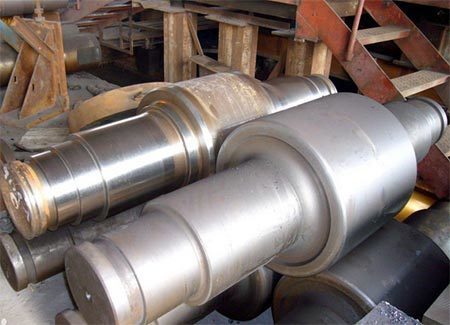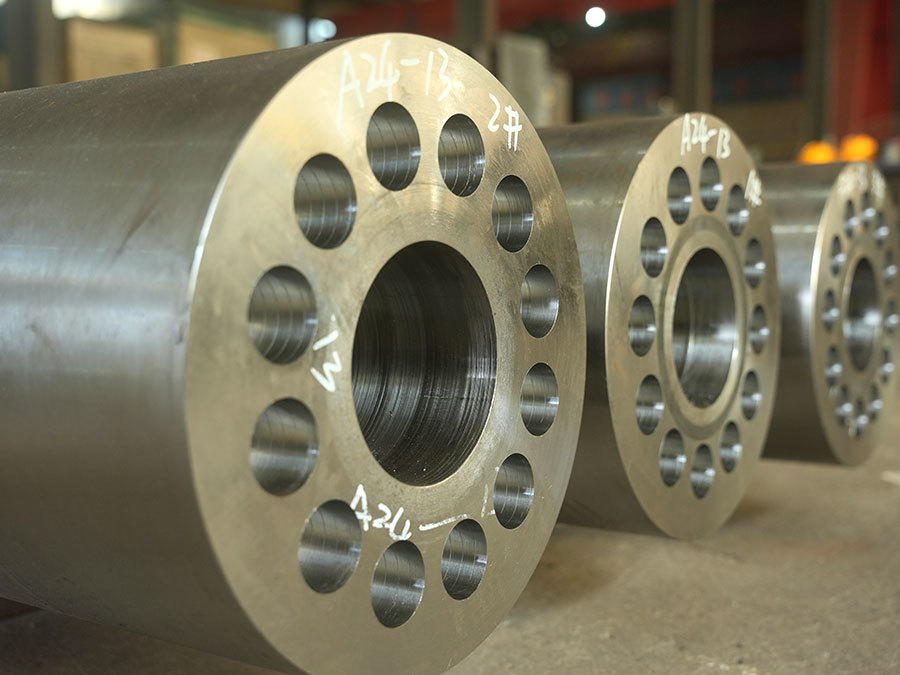The difference between composite roll and cemented carbide roll and its application characteristics
【Summary】The non-destructive testing of composite rolls is usually carried out with an ultrasonic flaw detector.
The non-destructive testing of composite rolls is usually carried out with an ultrasonic flaw detector. In the cold roll inspection standard, the roll body is usually divided into surface area, center area and middle area according to the force, and then the critical size of the allowable defects in each area is specified according to the principles of fracture mechanics. Flaw detectors should have knowledge of roll manufacturing in order to determine the nature of the defects. At the same time, they should also have knowledge of the use of rolls in order to estimate whether these defects may cause service damage under specific conditions of use.
Cemented carbide rolls are developed on the basis of cemented carbide tools. Cemented carbide is made by sintering the hard phase of hard tungsten carbide particles and the bonding phase metals such as nickel and cobalt. The performance of cemented carbide depends on the size of the tungsten carbide particles and the content of the bonding phase metal. When the bonding phase metal contains a relative amount of nickel and chromium, it will not only greatly improve the thermal fatigue resistance of the roll, but also improve Corrosion resistance of rolls. The hardness of cemented carbide rolls is generally controlled at 78HRA~85HRA, usually composed of cemented carbide roll rings and roller shafts.
cemented carbide roll rings are widely used in the finishing stands of high-speed wire rod mills, as well as the pre-finishing stands of some high-speed wire rod mills and the finishing stands of bar mills. The major advantages of cemented carbide rolls are high hardness and good wear resistance. The single-groove rolling volume can reach twice that of composite rolls. At present, it has advantages over other materials in the finishing stand of high-speed wire rod mills; the disadvantages are Low toughness and high brittleness. When it is used in a rolling mill such as a finishing stand or a reducing sizing stand of a bar mill, the roll ring is often caused by the impact of the pile steel or the low-temperature material head of the rolling material due to the large size of the rolled material and the large load carried by the roll ring. rupture. The composite roll takes into account the wear resistance of cast iron rolls and the strength and toughness of cemented carbide rolls.
Related Blog
The difference between composite roll and cemented carbide roll and its application characteristics?
The non-destructive testing of composite rolls is usually carried out with an ultrasonic flaw detector.
The difference between composite roll and cemented carbide roll and its application characteristics
The non-destructive testing of composite rolls is usually carried out with an ultrasonic flaw detector.
What are the commonly used heat treatment types for rolls?
Commonly used heat treatment types for rolls include stress relief annealing, isothermal spheroidizing annealing, diffusion annealing, normalizing, tempering, quenching, and cryogenic treatment.











